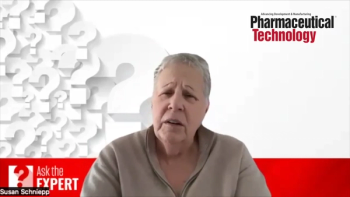Editor’s Note: This article was published in Pharmaceutical Technology Europe’s January/February 2025 digital issue.
- Pharmaceutical Technology, JanuaryFebruary 2025
- Volume 49
- Issue 1
Introducing a New Legal Framework, Fees, and Charges
EMA introduced its New Fee Regulation in January 2025, but what impact will the new fees and charges have on medicine developers?
On 1 Jan. 2025, the European Medicines Agency (EMA) introduced a new legal framework, fees, and charges for its regulatory activities and services to medicine developers (1). The New Fee Regulation (NFR) is governed by Regulation (EU) 2024/568 which amended Regulations (EU) 2017/745 and (EU) 2022/123 of the European Parliament and the Council (EPC) and repealed Regulation (EU) No 658/2014 and Regulation (EC) No 297/95 (2–5).
New fees are proportionate
Since the EMA became operational in 1995, it has depended on “fees payable” to offset the cost incurred for providing a range of activities and services listed in the Council Regulation (EC) No 297/95. EMA and the National Competent Authorities (NCA) need to receive efficient funding to carry on their activities and “ensure an efficient, responsive, and innovative regulatory system in Europe for human and veterinary medicines,” according to Jean-Michel Mastio, head of the Finance Department at EMA (6). The EMA budget is currently around €0.5 billion, and a large part of this budget is used to support the NCAs; more than 95% of the budget is generated from fees, and the remainder is contributed by the European Union (EU).
The fees were introduced in 1995 and recognize 23 different basic procedural fees including those associated with applications for certificates, marketing authorization applications (MAA), scientific advice (SA), inspections, as well as supplemental authorization of additional strengths and pharmaceutical forms (7). Other fee-related regulations include Regulation (EU) No 658/2014 regarding pharmacovigilance inspection activities, and Regulation (EC) No 2049/2005 for reduced fees associated with non-orphan medicinal products submitted by small and medium-sized businesses (SMEs), medicinal products with orphan designation (OD) or paediatric use, advanced therapy medicinal products (ATMPs), and medicinal products for preparedness against biological agents (8–11).
Since 2015, the European Commission (EC) has been working on reviewing the EMA fee system. The EMA’s user fee system was evaluated in 2019 to assess if the fees were in alignment with the underlying activity cost of the EMA and NCAs, to identify areas for improvement, and to reduce the complexity of the fee system (12). EMA previously amended fees in 1999 and 2005 to ensure there was adequate provision for the services it provides. Fees increase on an annual basis to adjust for inflation, with the last adjustment having been published in April 2022, which resulted in an increase in the fee level by 0.3% for 2020 and 5.3% for 2021 (13).
In December 2022, the EC published a proposal for the revised EMA Fee Regulation, and the EPC agreed on the revised EMA Fee Regulation in September 2023. It was adopted and formally published on 7 Feb. 2024 (6). In 2024, EMA published a working arrangements document that clarified the requirements and terminology of the new regulation, established fee reductions for certain types of services, and provided further details on payment modalities; the working arrangements were adopted by EMA’s Management Board in June 2024 (11). The key principles and objectives for the NFR are: harmonization, flexibility, alignment, and sustainability. The new fees are “proportionate” instead of the previous “standard” or flat-rate fees.
The provisions outlined in Regulation (EU) 2024/568 will apply to all requests validated and starting in January 2025 and will impact human and veterinary medicines. A few examples of the new fees compared with previous fees (2024) are summarized in Table I (14). Applications with OD or drugs for use in paediatrics will be exempt from fees; however, there are some special circumstances where administrative fees will be applicable. Namely, if an applicant submits the application and withdraws it after 24 hours or EMA rejects the application during the validation phase (15). If an applicant applies for certificates, parallel distribution, or SA, EMA will issue an invoice, and once the payment is received it will deliver the service. The application will be cancelled if EMA does not receive payment within 30 days (15).
For veterinary medicine, EMA has adopted a single framework to deliver a streamlined fee system, and the fees payable to EMA will be proportionate to the work carried out based on the complex evaluation, workload, and actual costs for the services delivered by EMA and NCA (6). The key changes to the fee regulations for veterinary medicines are summarized in Table II. EMA will charge a fee for certificates, SA, and MAAs, and the amount payable will be dependent on the type of active substance (i.e., new active substance or known active substance). The fee will be calculated after the submission of the application in conjunction with the related fee reductions. For more details, see Annex I, Section 2, or Annex II, Section 1, of the Fee Regulation and Chapter 1.1 of the Fee Regulation Working Arrangements (11,16,17).
Future implications
Overhauling of the EMA fees legislation is long overdue and should provide EMA and NCAs with sufficient funds to ensure they can continue to deliver high-quality services and adapt to future market demands. The simplified proportionate fee structure should be easier to navigate but may lead to significant increases in the fees payable for medicine developers particularly when obtaining or maintaining MAAs from January 2025 onwards (14).
References
1. EMA. Fees Payable to the European Medicines Agency. EMA.europa.eu. 1 Jan. 2025.
2. EMA. Regulation (EU) 2024/568. EMA.europa.eu. 4 Feb. 2024.
3. EMA. Regulations (EU) 2017/745. EMA.europa.eu. 5 April 2017.
4. EMA. Regulation (EU) 2022/123. EMA.europa.eu. 25 Jan. 2022.
5. EMA. Regulation (EU) No 658/2014. EMA.europa.eu. 15 May 2014.
6. EMA. New Fee Regulation. Webinar. 20 June 2024.
7. EMA. Council Regulation (EC) No 297/95. EMA.europa.eu. 10 Feb 1995.
8. EMA. Regulation (EU) No 658/2014. EMA.europa.eu. 15 May 2014.
9. EMA. Regulation (EC) No 2049/2005. EMA.europa.eu. 15 Dec. 2005.
10. EMA. Regulation (EC) No 141/2000. EMA.europa.eu. 22 Jan. 2000.
11. EMA. Fee Regulation working arrangement. EMA.europa.eu. 13 June 2024.
12. EC. Evaluation of the European Medicine Agency’s Fee System. 18 Sep. 2019.
13. AgencyIQ. What You Need to Know about the Status of the Proposed EMA Fees Regulation. POLITICO. 3 Nov. 2023.
14. DLCR. EMA Updated Fees: What Does This Mean for My Applications? 9 Aug. 2024.
15. Vignol, C. EMA – New Fee Regulation (NFR). RPN Group.com. 9 Aug. 2024.
16. EMA. Annex I to Regulation (EU) 2024/568; Q&As. EMA.europa.eu. 14 Nov. 2024.
17. EMA. Annex II to Regulation (EU) 2024/568; Q&As. EMA.europa.eu. 15 Nov. 2024.
About the author
Cheryl Barton is director of Pharmavision, info@pharmavision.co.uk.
Article details
Pharmaceutical Technology Europe
Vol. 37, No. 1
January/February 2025
Pages: 6–7
Citation
When referring to this article, please cite it as Barton, C. Introducing a New Legal Framework, Fees, and Charges. Pharmaceutical Technology Europe, 2025, 37 (1), 6–7.
Articles in this issue
11 months ago
Split Opinions on Training Strategies11 months ago
Next-Generation Anti-Obesity Medicines11 months ago
Evolving Approaches to Taste Masking11 months ago
Overcoming Biosimilar Scaling Challenges11 months ago
Steps to Process Development Optimization11 months ago
Advancing ADCs to the Next Level11 months ago
The Social Media CodeNewsletter
Get the essential updates shaping the future of pharma manufacturing and compliance—subscribe today to Pharmaceutical Technology and never miss a breakthrough.





